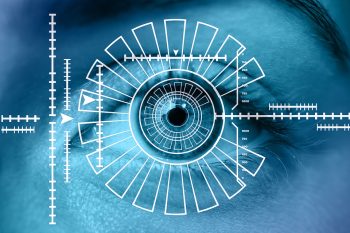Winning brands understand today’s consumers and ensure their operations are tuned into the trends pointing to tomorrow’s consumers. There are three macro trends underpinning today’s dynamic retail landscape that will help brands reimagine and prepare for the future.
1. Consumer 2.0: Over the last few years, brands have leveraged a wide range of emerging technologies to vastly improve the consumer experience and customer journey.
- Augmented Reality: L’Oreal acquired Canadian Modiface AR technology to offer their customers a holographic enabled experience that will help consumers learn about their products and services. Together with a massive focus on digital (they hired 2 000 digital experts!), L’Oreal grew their ecommerce by 34%.
- Holographics: A Toronto-based company called North has created custom fit glasses called Focals. These actually attractive glasses use holographics to present users with visual readouts of maps and directions, weather, calendar reminders and much more.
- Robots: Hema, a supermarket in China, uses robots to deliver food to customers at its restaurant.
- Biometrics: Facial recognition is being used in some Korean CS25 convenience stores to trial payment.
- Interactive Fixtures: Alibaba had created stores that incorporate AI signage, tables, walls, tablets, and mirrors allowing customers to easily select items, and view or consider recommendations for related products.
- Blockchain: Walmart has partnered with IBM partnership to improve efficiencies and food safety using blockchain. Blockchain will help them identify the precise sourcing at every stage of the supply chain, and will allow them to improve transparency and trust with consumers. In another example, AB InBev and Kiip Mobile Marketing are using block chain to address fraud in mobile advertising.

2. Do the Right Thing: Consumers are increasingly concerned about and invested in social purpose. Nielsen research suggests that 55% of online consumers are willing to pay more for products that have a positive social and environmental impact.
- Boost Mobile: In the USA, Boost Mobile responded to a lack of voting locations in poor communities by converting local stores into polling stations. The results – increases in both voter turn out of 23% and same store sales of 29%.
- Google: Stressing the need for retailers to be inclusive and transparent with their employees, thousands of employees around the world participated in a walk-out to support #MeToo and gender equality.
- Patagonia: The company founder, Yvon Chouindard, openly supported Democrat candidates in the most recent election (2018), advocated for Bears Ears national monument and Grand Staircase Escalente in opposition to the President, provided paid time off for staff to vote (2016, 2018), and donated $10 million in Black Friday Revenue to charity (2016).
- Ikea: Their newest commercial about a Red Lamp being thrown away and then reused marks a campaign to encourage the circular economy and the aftermarket. IKEA has committed to a 70% reduction in carbon footprint by 2030.
- Danone: Danone formally declared they intend to receive a ‘B Corp Certification,’ the highest standard of verified social and environmental performance, transparency, and balance of profit and purpose, by 2030.
- Molson: Molson is building a new Brewery in Quebec and is committed to achieving LEED certifications, which designate that a building is designed and built for high performance in human and environmental health.

3. Hunger for Relationships: A lot of research shows that despite its ability to connect people, social media is actually having negative effects on mental health. Retailers have been working over the last several years to create more genuine interpersonal relationships among employees and people within their outlets, and these efforts are escalating.
- Lululemon: In-store yoga classes are bringing local fans of the retailer and health together.
- Indigo: Indigo brings together fans to meet and greet their favourite authors.
- Nordstrom: Nordstrom has developed a personal shopper / stylist program to help people choose outfits that make them feel more confident in themselves and their style.
- DryEyeShop.com: This online non-profit shop connects people from around the world to share their personal experience, tips and tricks via a Facebook user forum, a separate website, and e-newsletter.
Winning retailers know that delighting tomorrow’s customer is far more than offering bargains alone. Emotional connection is critical and can be garnered by staying tuned to these 3 trends:
- Leverage technology to make the customer experience better,
- Commit to a social cause that ties to your brand while giving back in some way to the ‘greater good’, and
- Help foster personal connections, both between your customers and your staff as well as within your customer base.
Want help tailoring a plan to respond to these trends? Ask me about conducting a customized future focused Disruption Audit.



